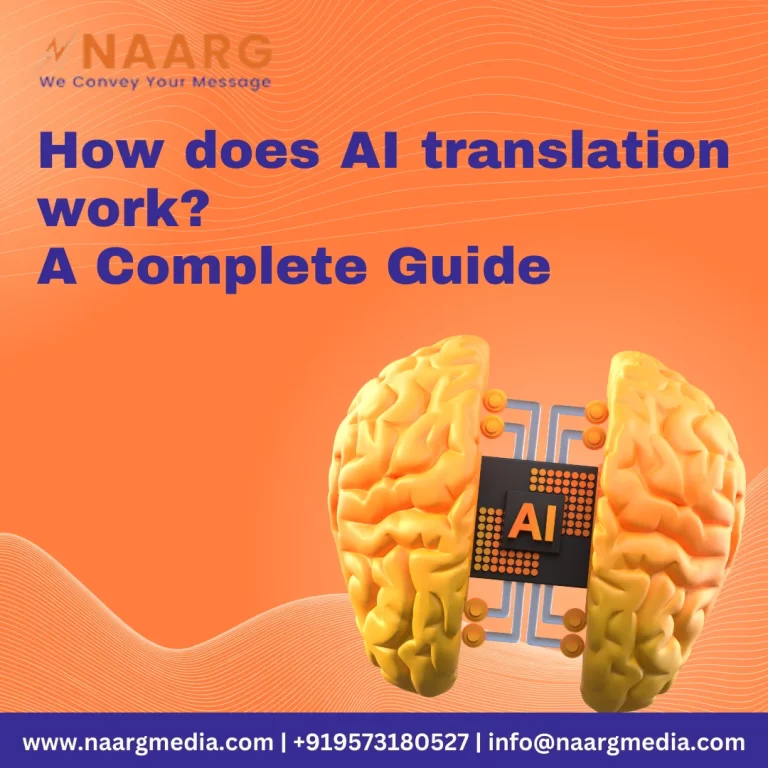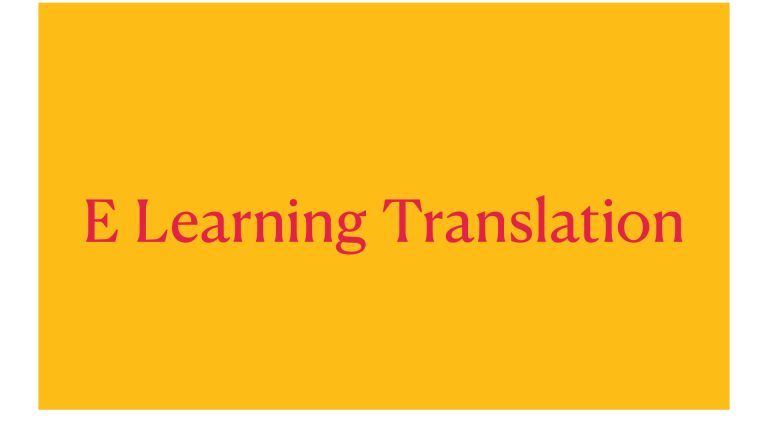How does AI translation work? This question must have come to your mind ever since you must have heard about AI translation. Machine translation is not new; it has been around for some time. However, recent advancements like artificial intelligence (AI) technology have simulated its needs. It has proven to be excellent language processing for more accurate translations and for understanding a large volume of text.
But still, for AI technology, there is a long way to go, as it still needs to be supervised by human translators. This blog will guide you through AI translation, the pros and cons of AI translation, and the challenges of AI translation. And the most essential question is: how does AI translation work?
So. Let’s get going.

What is AI translation?
Before delving deep into the process of AI translation, we need to understand what exactly AI translation is. It is a machine translation process based on complex deep-learning algorithms. AI translation tools use their intelligent behavior to reason through and understand a source text and generate translations in the target language. To understand the source text, which is linguistically challenging, a deep AI translator, or deep learning system, employs a system of neural networks inspired by the workings of the human brain.
Artificial intelligence has helped machine learning algorithms improve their parsing behavior, i.e., their grammatical accuracy and extraction of meaningful information. Also, it learned word usage, interpretation of text from one language to another, as well as how to generate linguistically structured sentences.
How does AI translation work?
Now, after understanding AI translation, let’s delve into the main question: how does AI translation work? But before that, let’s give you some statistics about AI translation. Did you know that the global artificial intelligence market is projected to expand at a compound annual growth rate (CAGR) of 37.3% from 2023 to 2030? And it is projected to reach a whopping amount of $1,811.8 billion by 2030. Now you must have understood the power that artificial intelligence holds. Coming back to our main question: how does AI translation work?
AI translation operates through machine learning algorithms and neural network models. There are various approaches through which AI translation works. One prevalent approach is neural machine translation (NMT), which uses deep learning to enhance translation quality. So, during training, the model is exposed to huge datasets that contain parallel texts in multiple languages.
Neural networks learn to understand the relationships between words and phrases in the source language and target language and generate contextually appropriate translations in the target language. This training enables the model to capture linguistic nuances, contextual nuances, and idiomatic expressions. Now, when you input text for translation, the trained model utilizes its learned patterns to generate a corresponding translation in the target language.
Pros and cons of AI translation
There are benefits and drawbacks to everything. And AI translation is not new to this. Let’s first look at the pros of AI translation:
Pros
1. Efficiency
AI translation can process a huge volume of text quickly, providing a significant speed advantage over traditional human translation.
2. Cost-Effective
Automated translation or AI translation tools eliminates the need for human translators, thus reducing overall time and cost for individuals and businesses.
3. Consistency
AI technology systems maintain a consistent level of translation quality and adhere to established rules. Thus ensuring uniformity in the translation process, which can be challenging to achieve with human translators.
Cons
1. Contextual challenge
Artificial intelligence struggles with understanding context, leading to inaccuracies in translation quality, especially in cases where the meaning depends heavily on the linguistic and surrounding context.
2. Cultural Nuances
AI may not fully capture idiomatic expressions and cultural nuances, potentially resulting in translation quality issues, and it will sound unnatural and inappropriate in the target language.
3. Domain-Specific limitations
AI translation technology systems may not perform equally well across all industries or domains. During the translation process, specialized terminology or technical jargon can pose challenges.
It is essential to consider the pros and cons of AI translation. It will help you make an informed decision about whether to use AI translation or human translation based on the specific requirements and context.
Main challenges in AI translation
Challenges are inevitable when it comes to AI translation. As we are still in the learning phase when it comes to artificial intelligence, Here we have listed some challenges faced in AI translation.
1. Contextual Ambiguity
Preserving and understanding context is a significant challenge for AI translation. Many cultures have different contexts. And ambiguous phrases or words can lead to inaccuracies in translation quality, as Google Translate or artificial intelligence tools may struggle to decipher the intended meaning.
2. Privacy and security concerns
Handling sensitive information through AI translation services raises a lot of questions and concerns about data security and privacy. You cannot trust artificial intelligence translations with confidential or proprietary information. As it may be processed by third-party systems.
3. Post-Editing challenges
Artificial intelligence (AI) can indeed provide a quick draft translation, but post-editing by human translators is often required to refine the translated output. Thus adding an extra layer of complexity to the translation process.
4. Quality and consistency
With AI translation, we do get rapid translation, but ensuring quality across various languages and domains remains a challenge. This challenge increases as the complexity of the language increases.
So, addressing these challenges involves various research and development efforts in the AI translation field. AI translation still has a long way to go, but that could be possible with a focus on improving contextual understanding and enhancing cultural sensitivity. And most importantly, the ability to handle diverse linguistic complexities.
As technology continues to advance, we can expect further improvements in accuracy, quality, and contextual understanding. Ready to make your translation projects more cost-effective with translation technology? We at Naarg are ready to help you with your translation project. For more queries, reach us at info@naargmedia.com to learn more about our services.

